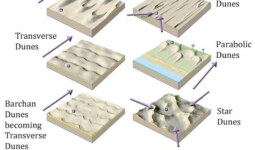Introduction to Malachite
Malachite is a vibrant green mineral that has fascinated geologists, gem enthusiasts, and mineralogists for centuries. Known for its striking green color and unique banded patterns, malachite is not only valued as a gemstone but also as an important ore of copper. In this article, we will explore the origins, properties, uses, and significance of malachite, providing a comprehensive overview for geology students.
What is Malachite?
Malachite is a copper carbonate hydroxide mineral with the chemical formula Cu(_2)CO(_3)(OH)(_2). It forms as a secondary mineral in the oxidation zones of copper ore deposits, where it crystallizes from solutions containing copper ions. Its vibrant green color is due to the presence of copper, which is a key element in its structure.

Key Properties of Malachite
- Color: Green, varying from light to dark green, often with banded patterns.
- Crystal System: Monoclinic.
- Hardness: 3.5 to 4 on the Mohs scale.
- Luster: Vitreous to silky, sometimes dull in massive forms.
- Streak: Light green.
- Transparency: Typically opaque, but can be translucent in thin sections.
Formation of Malachite
Malachite forms through the process of chemical weathering and oxidation of copper sulfide minerals. When copper ores are exposed to the atmosphere, they react with carbon dioxide and water, leading to the formation of copper carbonates such as malachite. This process usually occurs in the upper, oxidized portions of copper ore deposits, also known as the supergene zone.
Environmental Conditions for Formation
- Oxidizing Conditions: Malachite forms in environments where oxygen is present, which facilitates the oxidation of copper minerals.
- Availability of Carbon Dioxide and Water: The presence of carbon dioxide in water is necessary for the formation of carbonate minerals like malachite.
- Copper Source: Malachite is commonly found in association with other copper minerals, such as azurite, cuprite, and chrysocolla.
Geological Occurrence and Distribution
Malachite is found in many copper mining regions around the world. Some of the notable localities include:
- Democratic Republic of Congo (Katanga Province): This region is famous for producing high-quality malachite with rich green color and intricate banding patterns.
- Russia (Ural Mountains): Known for its large and ornate specimens, often used in decorative arts.
- Australia: Malachite is found in several copper deposits, including those in New South Wales and Queensland.
- United States: Significant deposits are located in Arizona, especially in the Bisbee and Morenci mines.
Uses of Malachite
Malachite has been valued for its beauty and utility for thousands of years. Its uses can be categorized into ornamental, industrial, and scientific applications:
1. Gemstone and Ornamental Use
- Jewelry: Malachite is cut and polished into cabochons, beads, and various shapes for use in rings, necklaces, and bracelets.
- Decorative Items: The mineral is crafted into vases, boxes, and inlays for furniture. Its vibrant color and attractive patterns make it popular for ornamental purposes.
2. Pigment
Historically, malachite has been ground into a fine powder and used as a green pigment in paints and dyes. This use dates back to ancient civilizations, including the Egyptians and Romans, who utilized malachite pigment for decorative and artistic purposes.
3. Ore of Copper
Malachite is an important copper ore, although not a primary one. It is often extracted as a by-product during the mining of more economically valuable copper sulfides. The copper content of malachite is about 57%, making it a significant source of this metal in some regions.
4. Educational and Scientific Use
In geology and mineralogy, malachite is used as a teaching specimen to illustrate mineral properties, crystallography, and the processes of secondary mineral formation. Its distinct color and ease of identification make it a useful sample for educational purposes.
Malachite’s Role in History and Culture
Malachite has a rich history that spans various cultures and civilizations. In ancient Egypt, malachite was associated with the goddess Hathor and was used in amulets, jewelry, and as a pigment for eye makeup. The Russians famously used malachite for intricate inlays and decorative arts, with notable examples found in the Hermitage Museum in St. Petersburg.
Health and Safety Considerations
While malachite is prized for its beauty, it is important to handle it with care. The dust generated from cutting or grinding malachite can be toxic if inhaled, due to its copper content. Proper safety measures, including wearing masks and using dust collection systems, should be employed when working with malachite.
Conclusion: The Significance of Malachite
Malachite is more than just a beautiful green mineral; it is a window into the geological processes that shape our planet. For geology students, understanding malachite provides insights into mineral formation, ore genesis, and the history of mining. Its unique properties and wide range of applications make malachite an important subject of study in the field of geology.




Leave a comment